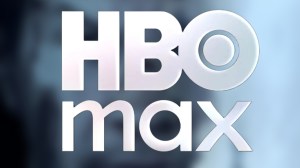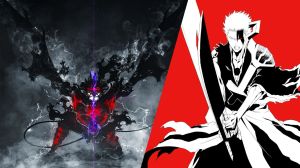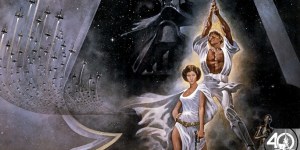Rebellion’s upcoming Battle Action Special will celebrate one of the most infamous British comics anthologies of all time. Action, a precursor to 2000 AD, had a reputation for extremely violent stories that eventually caught the ire of the tabloid press, leading to its downfall. It later returned in a lesser form, then merged with Battle Picture Weekly to form Battle Action. Battle Action Special celebrates the series’ legacy by reviving seven of its serialized stories with new chapters, each written by Garth Ennis, the celebrated co-creator of Boys and .
Videos by ComicBook.com
One of the most infamous Battle Action stories is Kids Rule OK! Written by Jack Adrian with art by Mike White, the series took place in a dystopian future where adults had died off in a plague and gangs of children roamed the Earth. The new Battle Action Special includes a new Kids Rule OK! story that is iconic artist Kevin O’Neill’s first comics work since completing League of Extraordinary Gentlemen in 2019. ComicBook.com had the opportunity to speak with both Ennis (via email) and O’Neill (on the phone) about Battle Action Special and Kids Rule OK! and to share a first look at the story. Here’s what the creators shared with us:

Jamie Lovett, ComicBook.com: Your Kids Rule OK! story provides a narrative for a famous (or infamous) Carlos Ezquerra Action cover. Why did you go that route? What triggered the idea to tell that story?
GE: I’d be very keen to avoid spoilers here, as I’d like people to experience that story with as few preconceptions as possible. But you might say that the Kids Rule OK! story in the special gave me an opportunity for some direct commentary on the original trouble over Action and its eventual merger with Battle, as well as to tell a story inspired by but not continuing from the original. As such it’s unlike the other stories in the special, sort of its own thing.
Kevin O’Neill: When I got offered the piece. I got a message out of the blue from Rebellion, asking if I’d be interested in working with Garth Ennis on a chapter of his project. And the call came through at just the right time. I was looking to do some more comic work as I’d long since finished League of Extraordinary Gentlemen and I’d never worked with Garth before. I knew Garth. We’d met intermittently over the years, but we never worked together.
But the story came through and I guess I might’ve been chosen for it because it is largely about censorship, and I’ve had some run-ins with censorship in the past. The story is built around the infamous Action cover that Carlos Ezquerra drew, which seemed to show a yob chain to death a policeman. My old boss, Gina Harp, probably colored that cover. There was a huge, huge uproar over this.
In those days, before video nasties, The Guardian and The Sun newspapers would fall like packs of wolves onto anything that upset them in comics for what they saw as kids. Action had been really close to the line for some time.
I was on the staff of 2000 AD at the time as art assistant to Jan Shepheard, the art editor, and the fallout from Action, from that cover, meant that the management were shaken. I know WHSmith stopped carrying their publications, which was ludicrous because IPC at the time were the biggest publisher in the world. That rattled them, so they took Action off the stands. I was actually living in Stockwell at the time, and I remember hearing a kid on a Saturday morning screaming down the street that “they’ve taken away our comic” because Action was incredibly popular.
We were preparing the very early issues of 2000 AD. This is sort of late 1976. And we got the fallout as well, because 2000 AD at that point, as it was being prepared, was a kind of an Action set in the future, so there was a great deal of violence in it. M.A.C.H. 1 which was kind of a rip-off of The Six Million Dollar Man that was incredibly violent. Invasion was violent, Flesh was violent, even before we get onto issue two and Judge Dredd appearing. So before that hit us, Action was taken off the stands. It disappeared for a while. It returned completely emasculated in a form that the readers would think that, “Oh, we’ve been had.” It was a thankless task. It was a poison chalice for whoever took it on really because management were not going to let it continue as it was.
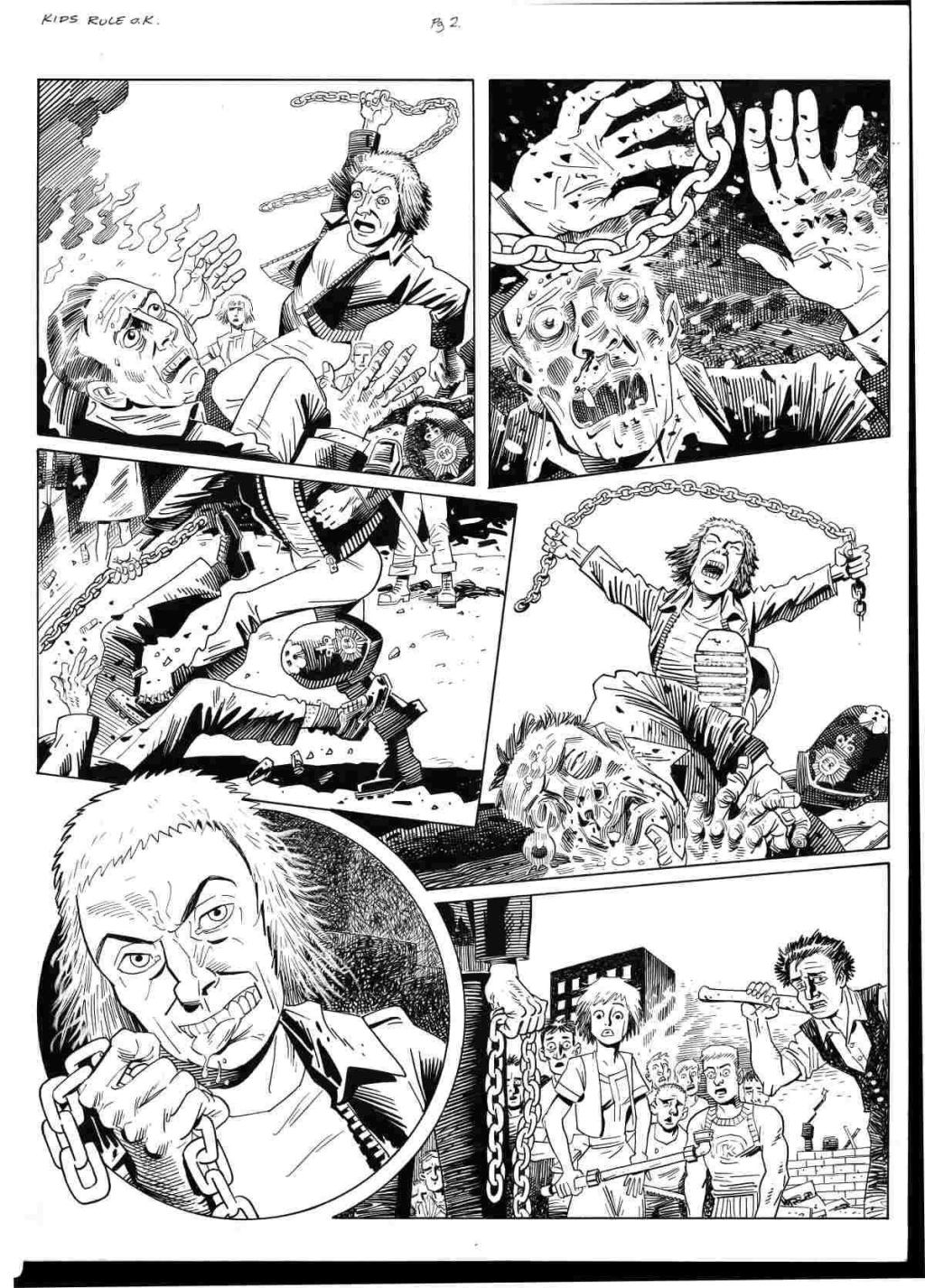
Now, unfortunately for 2000 AD, we were very close to sending Issue 1 to press. So that meant that the first press date was Christmas Eve, 1976. And Christmas Eve, people worked a half-day. That was the norm back then. So people were still working in the afternoon. Me and Kelvin Gosnell, the associate editor, were so close to the courier picking up the first issue. It had to all go to press. It was absolutely essential, they would lose money if it didn’t. Then, Kelvin Gosnell and I were reattaching heads and writing out blood and Kelvin was working on the top of one page while I was working on the bottom of the same page on the desk because we were just running out of time. We managed to get it all done. We got it off to press.
And actually, one of the best fallouts from the Action problem was it made 2000 AD shrewder, it made it cleverer, and I think it, in a bizarre way, improved things. It was very exciting having the ultra-violence we had in 2000 AD as indeed Action had, but it was sailing close to the wind and really might be more clever. For instance, we started to use robots in stories. You can decapitate a robot and it’s a robot. That’s fine. You can just dismember a robot and that’s fine. It got pushed to the limit much later on in Mean Arena, the sequel to Harlem Heroes, where we had cyborgs that looked like humans that were ripped to bits. We did get management interference over that.
This is a long way round of saying that there was immense fallout from that issue of Action. The story I’m doing with Garth is really the story of that cover, and the cover had actually nothing to do with the interior strip. The story with Garth is built around the fallout from that cover and it was great. It was a great pleasure doing it and figuring out the best angle of how to illustrate it. And I was given the option of either doing it in black and white or color, so I elected to have both. There’s a color sequence in it, which is more illustrative, and then there’s a black-and-white strip, which is the basic story in the manner of ’70s comics.
I have to say, that image of cartoonists working hard to reattach heads to images is amazing. It’s probably going to stick with me for a while.
KO: [Laughs] Well, see, M.A.C.H. 1, the strip would’ve been hugely popular in his violent form. It was the most popular strip in 2000 AD by the old readers’ votes, which I never took much notice of. I think it was very popular in 2000 AD at the beginning because they recognized it for what it was. It was The Six Million Dollar Man, but violent. [The Six Million Dollar Man[ was still violent, but it wasn’t as violent as him booting someone in the middle and putting his boot straight through their body or punching their head off and stuff like that, which was the original version.
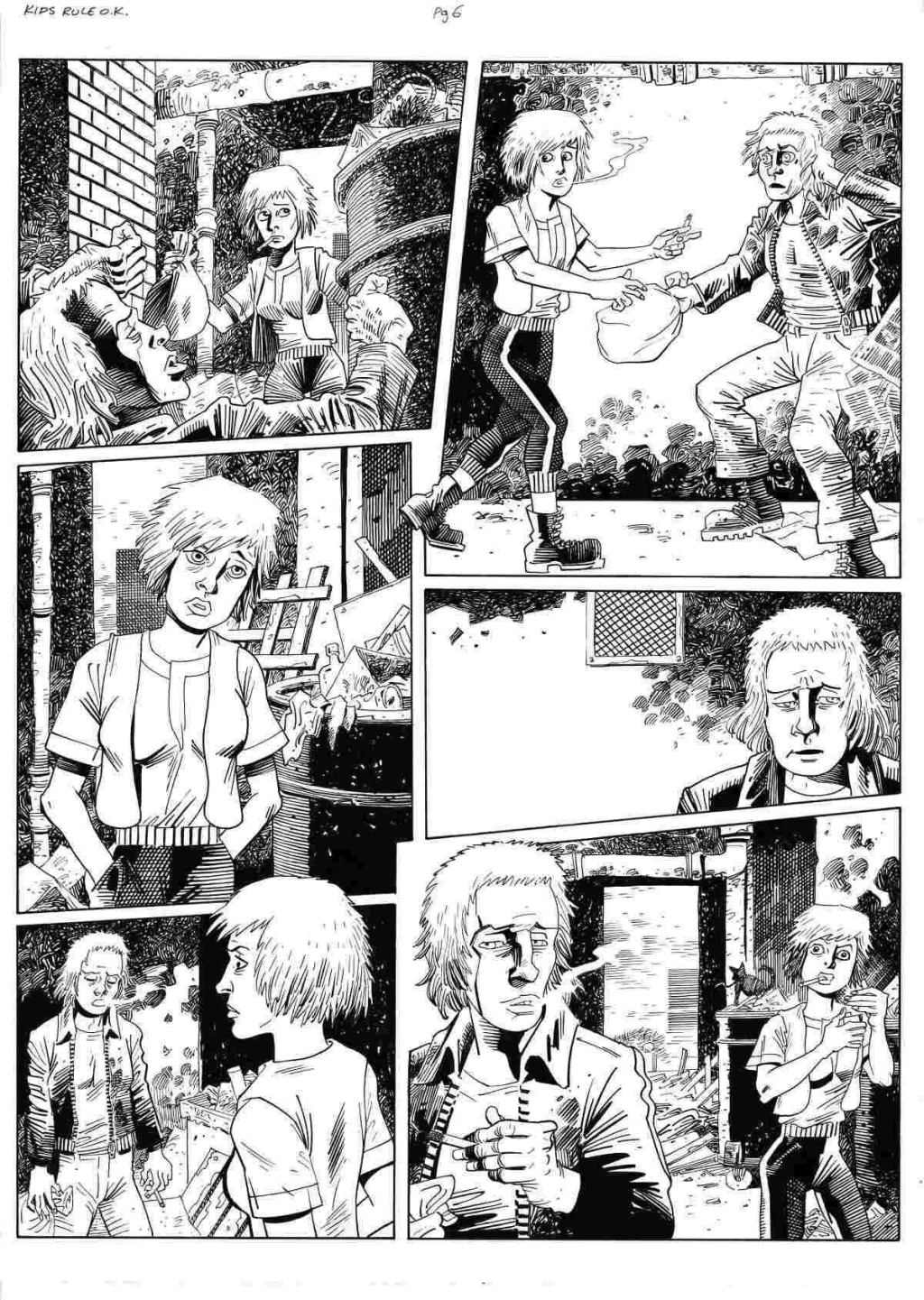
I appreciate you explaining some of that history to me because as an American I’ve tried to keep up with 2000 AD and do my research into its predecessors and know that history, but I’ll always be somewhat removed from it. It sounds like a version of what happened with EC Comics over here.
Garth Ennis: I don’t know enough about the EC controversy to answer in detail, but Action‘s problems came from complaints over content leading to extreme nervousness from the publishers. The comic was withdrawn from sale, rereleased in neutered form, and eventually canceled due to falling sales- then folded into the already successful Battle to become Battle Action. That’s essentially where my interest began; I first read Battle Action in the summer of ’78, not long after the merger, so I only learned about all this much later. At the time I saw Battle Action as an exciting and dynamic war comic, with fantastic writing and art. Not knowing which stories had come from Action and which hadn’t, I was able to enjoy them all on their own terms. As to the comic’s influence on me, it gave me a lifelong interest in military history which eventually led me to writing my own war comics.
KO: America had a comics code, which kept things reigned in for a long period of time before Marvel and DC pressured it to change things, to allow vampires and stuff like that. Britain never had that. But what we had was this vague sense of, this is how far you can go. We’d always go to the limit and then we’d go over it. 2000 AD always went over it later on, and then management would send someone in. It was Bob Bartholomew in our case. He was elected to review the pages before they were sent to the printer, so he would come round and say, “You can’t.” Mean Arena got more and more violent, and the readership liked it. It was popular. But there was a sense of management looking at, thinking “Where ultimately is this going?”
I was often asked to change little small things in my artwork for ludicrous reasons later on. But the fallout from Action, which the Garth story is built around, was massive at the time because you cannot underestimate the power of the tabloid newspapers when they turned on comics. I believe Action was torn up on a BBC show called Nationwide with Frank Bough, who was disgraced years later for various misdemeanors, but he tore up a copy of Action on-screen as worthless trash. That was the atmosphere. I don’t think 2000 AD could have been canceled before it was launched because too much time and money had been spent developing it, but by God, it probably came close And nobody knew what was happening. My sense personally was basically, I loved underground comics, so I thought too far wasn’t far enough. I would’ve gone a lot further. But then ultimately, I didn’t have the power to pull it off the stands, but they did, and that would’ve put a lot of people out of work, ended in its early days, something as great as 2000 AD.
I always had a slight problem with Action because it had, it sounds really odd to you maybe, but it had machine lettering, which I always hated. I liked hand lettering. We had hand lettering on 2000 AD and we had fantastic letterers. Some letterers, like Jack Potter, we used to rescue strips which weren’t quite up to snuff.
But Action being taken off the stands when we were just prepping to go to press with the first early issues [of 2000 AD] was a disaster, an absolute disaster. And the way they brought it back, they gave it to a safe-pair-of-hands editor, meaning this is all going to be soft-pedaled. And the kids who were out there that were fans, they just knew they’d been had. The Kids Rule OK! story had a ridiculous ending, one of these happy endings. It was ludicrous. It just undid all the work that Action put into developing its persona, what people bought it for.
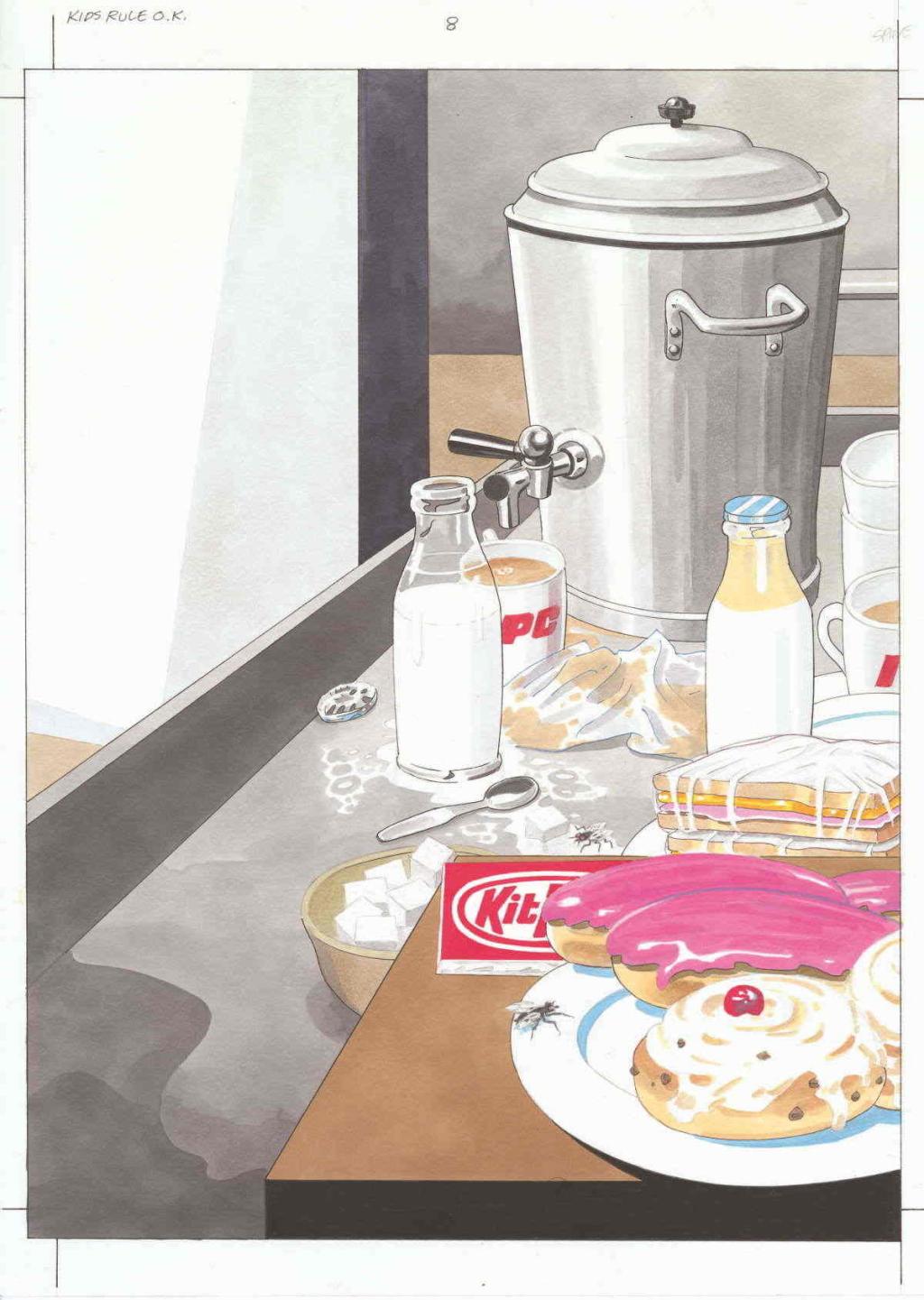
Garth, what brought you to this project? What hooked you?
GE: I’d enjoyed writing for the Battle and Action specials published in 2020 and was keen to do more, but didn’t get much sense of urgency regarding further such releases. So I figured, okay, just do it yourself. My main goal was to celebrate some of the best stories from Battle Action and introduce them to a new audience; to draw readers’ attention to the work of writers and artists who I felt had been unfairly forgotten, and who knows, maybe get some of their classic work back into print. Here I’m talking about people like Alan Hebden, Tom Tully, Gerry Finley-Day, Joe Colquhoun, John Cooper, Mike Dorey (who I’m pleased to say is drawing Hellman for the special), Eric Bradbury, and Mike Western.
(This, incidentally, is not just nostalgia- the road that began with Battle led through Action to 2000 AD, and as such makes up the most important element in British comics’ history. If any of them had failed mainstream comics would now be very different, and not just in the UK- as Karen Berger has said, no 2000 AD, no Vertigo.)
You’re no stranger to violent or subversive comics. What’s something specific about Battle Action and Kids Rule OK! that you were trying to tap into that might distinguish it from your other work or other comics like it? Or are the similarities part of what drew you to it?
GE: Those are rarely terms I think in; how something does or doesn’t fit with my other work means very little to me compared to what potential I see in the story. I suppose you could say that people will recognize my natural love for war comics in things like Johnny Red, The Sarge, Crazy Keller, Hellman, and Nina Petrova, and perhaps some of the more outrageous elements of other stories I’ve written in Dredger.
You’ve worked with some of the great 2000 AD artists in the past, and now Kevin O’Neill. What were you hoping he would bring to your Kids Rule OK script?
GE: It was actually editor Oliver Pickles’ idea to ask Kevin to draw the strip- so bloody well done, Oliver. I didn’t have any specific hopes when it came to Kevin’s artwork; the fact that he was drawing it was all I needed to hear. This is the guy, after all, who co-created and drew Ro-Busters, ABC Warriors, Metalzoic, Marshall Law, and The League of Extraordinary Gentlemen– and who melted my eleven-year-old mind with Nemesis The Warlock.
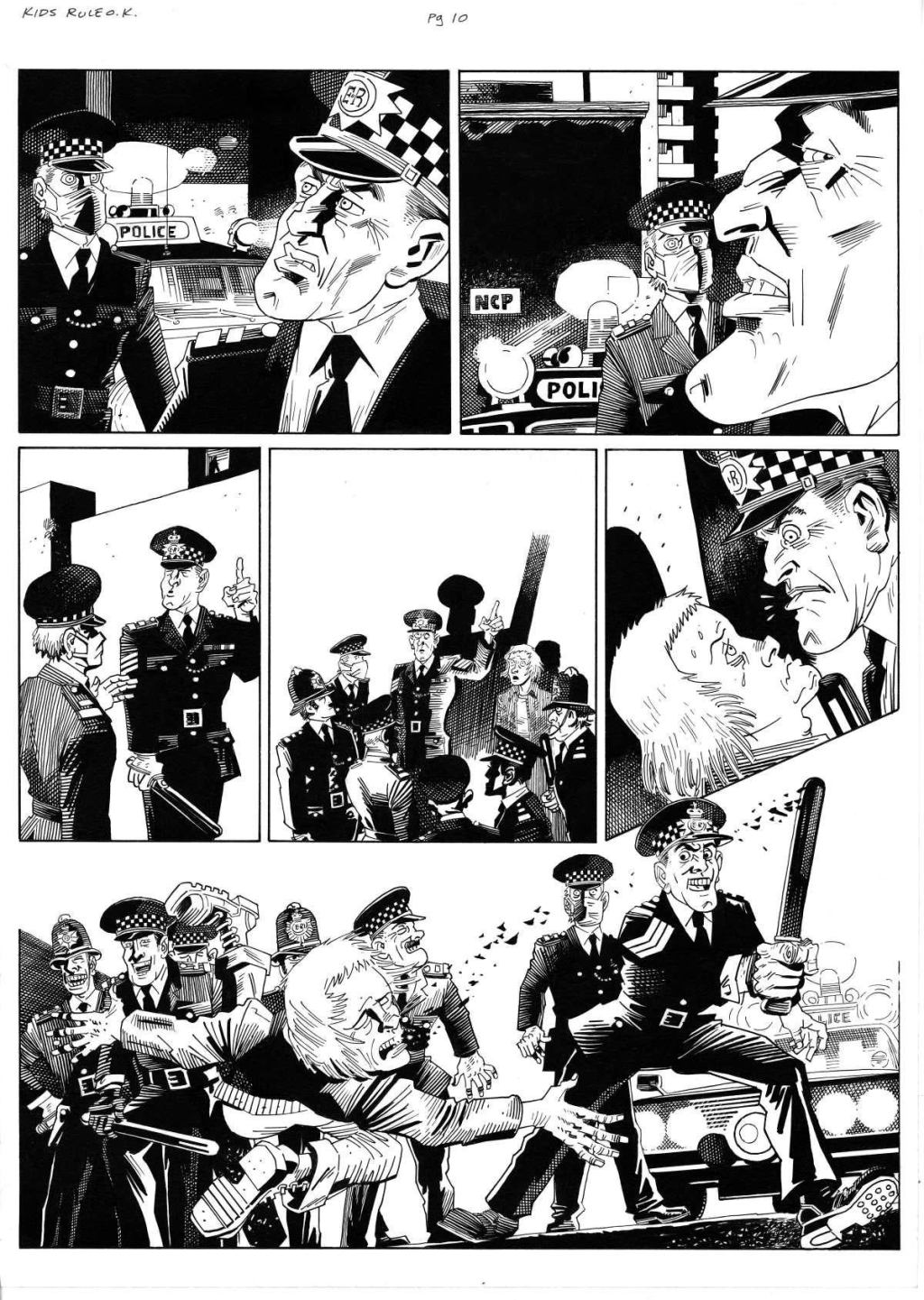
Before moving on, I have to ask, there were rumors that you, Kevin, were going to retire from comics after finishing League of Extraordinary Gentlemen. Was there ever any truth to that, or was that a misunderstanding coming from Alan Moore stepping away from comics?
KO: What happened really was Alan retired me early. Alan’s retirement from comics, it meant he was stopping writing comics. That was the end of it. I didn’t say I was retiring. I thought this might be the last comic I draw, League of Extraordinary Gentlemen, and I was very happy. We actually got to the ending and gave it a proper ending. That was very important to us to do that. But I was still up for doing comics, it just depended on what they were.
I’ve illustrated two books of my own. They’re not comic strip books, they’re full-color illustrated books, and I’ve done two of them, and I was very pleased with them, but in the middle of that, I got the request from Rebellion, “Would you be interested in the Garth story?” And that’s perfect, and that was perfect for me, came just at the right moment. I really enjoyed it. I enjoy doing comics.
There’s a lot going on with this story, in terms of it being something of a homecoming for you being that it’s 2000 AD, or at least 2000 AD adjacent. You’re working with Garth for the first time. It’s the first time you’ve worked from someone’s script that’s not Alan Moore’s in a while. What kind of goals or challenges did you have in mind for yourself when you set out to draw this story?
KO: When I got the script, I did say to Garth via email that I loved it. But of course the strip, it’s kind of built around Kids Rule OK!, which wasn’t something I particularly followed, but I did have in my voluminous collection of books about comics a book on Action, which reprinted all of Kids Rule OK!, including the terrible ending they added to it after it was taken off the stands and returned to publication. So I had that to look at, but as it was built around the cover, which had nothing to do with the interior, so it was a hybrid approach I did. It was interesting. It made me cast my mind back to what it was like in the ’70s and how comics were done. It’s a fairly formal layout. I just did my best with it. There are enough nods and winks to various people who were around at the time. I found Garth’s script was charming. It was very direct, it hit all the right buttons, and I tried to do as respectful a job as I could with it, casting my mind back to what things were like in the ’70s, but aware that we are doing this for a modern audience and people like you, who perhaps they know nothing really about what was going on back then or how potent the situation was with Action.
But it’s probably an odd story. It’s different from the others, which are, I believe continuations really, of strips that appeared in Battle Action. This is an oddball thing and I totally enjoy it because as I say the main strip is in black and white form and I love doing them because I’ve been working on a lot of colorwork for a considerable amount of time. It was fun. I thoroughly enjoyed it and I’m looking forward to working with Garth again.
Battle Action Special goes on sale on September 13th. This interview has been edited for length, flow, and clarity.


